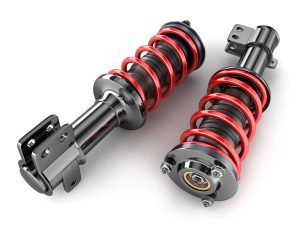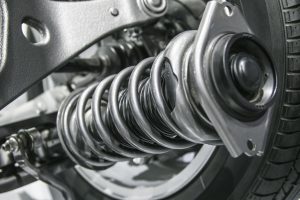Table of Contents
- The Role of Shock Absorbers in Suspension Tuning
- Types of Shock Absorbers for Tuning
- Benefits of Upgraded Shock Absorbers
- Factors to Consider When Tuning Shock Absorbers
- Steps to Improve Suspension and Handling
- Tips for Choosing Shock Absorbers
Tuning a vehicle is about optimizing performance, and one of the most impactful upgrades you can make is to its suspension system. Shock absorbers are central to suspension tuning, significantly affecting ride quality, handling, and overall driving experience. This article will explore how to choose and optimize shock absorbers for tuning, the benefits of upgraded suspension systems, and tips for achieving the best results.
The Role of Shock Absorbers in Suspension Tuning

Shock absorbers are devices that control the movement of a vehicle’s suspension. They dampen the oscillations of the springs and keep the tires in consistent contact with the road. In tuning, shock absorbers play a critical role in:
- Improving Handling: By minimizing body roll and maintaining tire grip during cornering.
- Enhancing Stability: Ensuring that the vehicle remains balanced under various driving conditions.
- Optimizing Ride Comfort: Absorbing road imperfections for a smoother experience.
- Boosting Performance: Providing better control for high-speed and dynamic driving.
Types of Shock Absorbers for Tuning
Choosing the right type of shock absorber is essential for effective tuning. Below are the primary options:
1. Hydraulic Shock Absorbers
- Use hydraulic fluid to dampen suspension movement.
- Suitable for everyday driving and mild performance enhancements.
2. Gas-Charged Shock Absorbers
- Contain pressurized nitrogen gas to prevent fluid foaming.
- Offer better performance and stability under demanding conditions.
3. Adjustable Shock Absorbers
- Allow customization of damping force to suit specific driving styles or conditions.
- Ideal for enthusiasts who frequently switch between track and road driving.
4. Coilover Shock Absorbers
- Combine a spring and shock absorber into a single unit.
- Enable adjustments to ride height and damping, making them perfect for advanced tuning.
Benefits of Upgraded Shock Absorbers
Upgrading your shock absorbers can significantly enhance your vehicle’s performance. Here are the key benefits:
- Better Handling: Improved stability and responsiveness during cornering and braking.
- Reduced Body Roll: Enhanced control and safety during high-speed maneuvers.
- Increased Tire Longevity: Maintaining consistent road contact reduces uneven wear.
- Enhanced Ride Quality: Improved absorption of road irregularities.
- Customizable Performance: Adjustable shocks allow for fine-tuning to suit individual preferences.
Factors to Consider When Tuning Shock Absorbers

Driving Style and Purpose
Determine whether you need performance-oriented tuning for racing or a balanced setup for daily driving.
Vehicle Specifications
Consider your vehicle’s weight, suspension geometry, and intended use to choose compatible shock absorbers.
Adjustment Features
If you require flexibility, opt for adjustable shock absorbers to modify damping and ride height.
Budget
Tuning can range from affordable upgrades to high-end solutions. Set a budget and prioritize features accordingly.
Steps to Improve Suspension and Handling
1. Upgrade to Performance Shock Absorbers
Replace stock shock absorbers with performance-oriented options for better control and comfort.
2. Install Stiffer Springs
Pairing shock absorbers with stiffer springs can enhance cornering and reduce body roll.
3. Optimize Suspension Alignment
Proper alignment ensures that the suspension system performs efficiently and improves tire grip.
4. Adjust Ride Height
Lowering the ride height reduces the center of gravity, improving stability and aerodynamics.
5. Use Sway Bars
Installing sway bars reduces body roll during cornering, enhancing overall handling.
6. Regular Maintenance
Keep the suspension system in top condition through routine inspections and servicing.
Table: Comparison of Shock Absorbers for Tuning
| Type | Advantages | Disadvantages |
|---|---|---|
| Hydraulic | Affordable and reliable | Limited performance capabilities |
| Gas-Charged | Improved stability and performance | Higher cost than hydraulic shocks |
| Adjustable | Customizable damping and performance | Requires expertise to tune properly |
| Coilover | Full adjustability and optimal control | Expensive and complex installation |
Tips for Choosing Shock Absorbers
- Consult a Professional: Seek advice from tuning experts to ensure compatibility and effectiveness.
- Test Before Finalizing: If possible, test different setups to find the best fit for your vehicle and preferences.
- Invest in Quality: Opt for reputable brands to ensure durability and performance.
- Pair with Proper Components: Ensure springs, sway bars, and other suspension elements are compatible with your shock absorbers.
Maintenance Checklist for Tuned Suspension Systems
| Task | Frequency | Notes |
| Inspect shock absorbers | Every 10,000 km | Look for leaks or damage |
| Check alignment | Annually or as needed | Prevents uneven tire wear |
| Clean suspension components | Quarterly | Removes debris that can cause wear |
| Adjust damping settings | As needed | Fine-tune for driving conditions |
Where to Find Quality Shock Absorbers
When upgrading your suspension system, it’s essential to use high-quality components. For a wide range of reliable shock absorbers and other spare parts, find a spare part tailored to your needs.
Conclusion
Tuning your vehicle’s shock absorbers can dramatically improve suspension performance, handling, and ride quality. By choosing the right type of shock absorber, considering your driving style, and following proper maintenance practices, you can achieve a suspension system that enhances both safety and enjoyment.
Whether you’re a racing enthusiast or a daily driver seeking better performance, investing in quality shock absorbers is a smart decision. To get started on your tuning journey, explore the options available and find a spare part that meets your requirements.